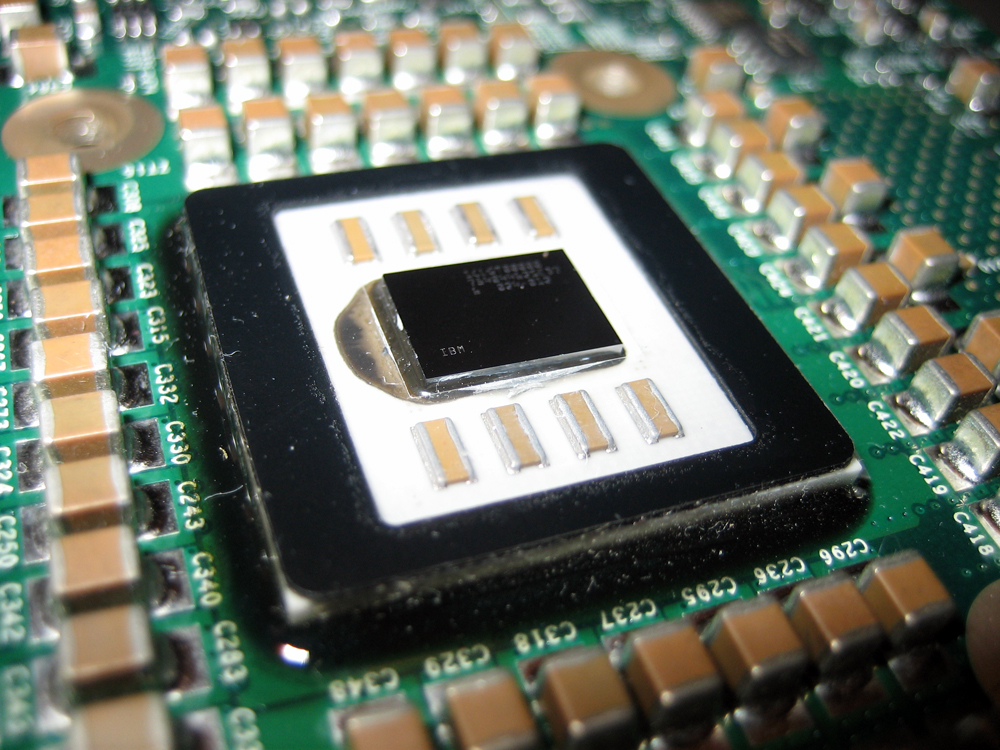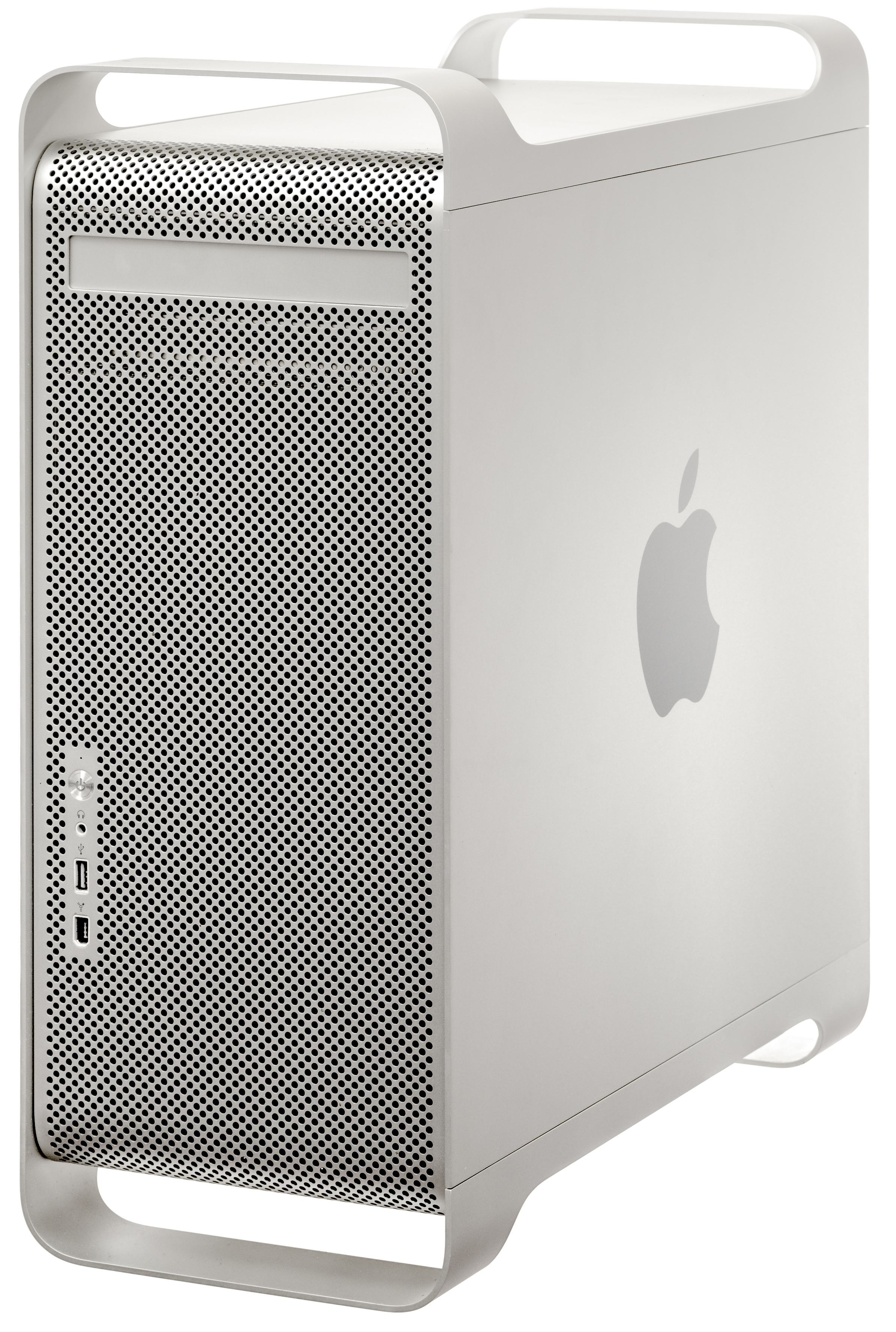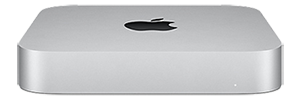|
PowerPC
PowerPC (with the backronym Performance Optimization With Enhanced RISC – Performance Computing, sometimes abbreviated as PPC) is a reduced instruction set computer (RISC) instruction set architecture (ISA) created by the 1991 Apple Inc., Apple–IBM–Motorola alliance, known as AIM alliance, AIM. PowerPC, as an evolving instruction set, has been named Power ISA since 2006, while the old name lives on as a trademark for some implementations of Power Architecture–based processors. PowerPC was the cornerstone of AIM's PReP and Common Hardware Reference Platform (CHRP) initiatives in the 1990s. Originally intended for personal computers, the architecture is well known for being used by Apple's Power Macintosh, PowerBook, iMac, iBook, eMac, Mac Mini, and Xserve lines from 1994 until 2005, when Mac transition to Intel processors, Apple migrated to Intel's x86. It has since become a niche in personal computers, but remains popular for embedded system, embedded and high-performanc ... [...More Info...] [...Related Items...] OR: [Wikipedia] [Google] [Baidu] |
IBook
iBook is a line of laptop computers designed, manufactured, and sold by Apple Computer from 1999 to 2006. The line targeted entry-level, consumer and education markets, with lower specifications and prices than the PowerBook, Apple's higher-end line of laptop computers. It was the first mass consumer product to offer Wi-Fi network connectivity, which was then branded by Apple as AirPort. The iBook had three different designs during its lifetime. The first, known as the "Clamshell", was inspired by the design of Apple's popular iMac line at the time. It was a significant departure from previous portable computer designs due to its shape, bright colors, incorporation of a handle into the casing, lack of a display closing latch, lack of a hinged cover over the external ports and built-in wireless networking. Two years later, the second generation abandoned the original form factor in favor of a more conventional, rectangular design. In October 2003, the third generation was intro ... [...More Info...] [...Related Items...] OR: [Wikipedia] [Google] [Baidu] |
Mac Transition To Intel Processors
Apple transitioned the CPUs of their Mac and Xserve computers from PowerPC to the x86 architecture from Intel. The change was announced at the 2005 Worldwide Developers Conference (WWDC) by then-Apple CEO Steve Jobs, who said Apple would gradually stop using PowerPC microprocessors supplied by Freescale (formerly Motorola) and IBM. This was the second time Apple changed the processor instruction set architecture of its personal computers. The first was in 1994, when Apple discarded the Mac's original Motorola 68000 series architecture in favor of the then-new PowerPC platform. Apple's initial press release said the move would begin by June 2006 and finish by the end of 2007, but it actually proceeded much more quickly. The first-generation Intel-based Macintoshes were released in January 2006 with Mac OS X 10.4.4 Tiger. In August, Jobs announced the last models to switch, with the Mac Pro available immediately and the Intel Xserve available by October (it actually shipped ... [...More Info...] [...Related Items...] OR: [Wikipedia] [Google] [Baidu] |
AIM Alliance
The AIM alliance, also known as the PowerPC alliance, was formed on October 2, 1991, between Apple, IBM, and Motorola. Its goal was to create an industry-wide open-standard computing platform based on the POWER instruction set architecture. It was intended to solve legacy problems, future-proof the industry, and compete with Microsoft's monopoly and the Wintel duopoly. The alliance yielded the launch of Taligent, Kaleida Labs, the PowerPC CPU family, the Common Hardware Reference Platform (CHRP) hardware platform standard, and Apple's Power Macintosh computer line. History Development From the 1980s into the 1990s, the computer industry was moving from a model of just individual personal computers toward an interconnected world, where no single company could afford to be vertically isolated anymore. ''Infinite Loop'' says "most people at Apple knew the company would have to enter into ventures with some of its erstwhile enemies, license its technology, or get bought". Further ... [...More Info...] [...Related Items...] OR: [Wikipedia] [Google] [Baidu] |
Power ISA
Power ISA is a reduced instruction set computer (RISC) instruction set architecture (ISA) currently developed by the OpenPOWER Foundation, led by IBM. It was originally developed by IBM and the now-defunct Power.org industry group. Power ISA is an evolution of the PowerPC ISA, created by the mergers of the core PowerPC ISA and the optional Book E for embedded applications. The merger of these two components in 2006 was led by Power.org founders IBM and Freescale Semiconductor. The ISA is divided into several ''categories'' which are described in a certain ''Book''. Processors implement a set of these categories as required for their task. Different classes of processors are required to implement certain categories, for example a server-class processor includes the categories: ''Base'', ''Server'', ''Floating-Point'', ''64-Bit'', etc. All processors implement the Base category. Power ISA is a RISC load/store architecture. It has multiple sets of registers: * ''32'' × 32-b ... [...More Info...] [...Related Items...] OR: [Wikipedia] [Google] [Baidu] |
Power Architecture
Power ISA is a reduced instruction set computer (RISC) instruction set architecture (ISA) currently developed by the OpenPOWER Foundation, led by IBM. It was originally developed by IBM and the now-defunct Power.org industry group. Power ISA is an evolution of the PowerPC ISA, created by the mergers of the core PowerPC ISA and the optional Book E for embedded applications. The merger of these two components in 2006 was led by Power.org founders IBM and Freescale Semiconductor. The ISA is divided into several ''categories'' which are described in a certain ''Book''. Processors implement a set of these categories as required for their task. Different classes of processors are required to implement certain categories, for example a server-class processor includes the categories: ''Base'', ''Server'', ''Floating-Point'', ''64-Bit'', etc. All processors implement the Base category. Power ISA is a RISC load/store architecture. It has multiple sets of registers: * ''32'' × 32- ... [...More Info...] [...Related Items...] OR: [Wikipedia] [Google] [Baidu] |
AmigaOne
AmigaOne is a series of computers intended to run AmigaOS 4 developed by Hyperion Entertainment, as a successor to the Amiga series by Commodore International. Earlier models were produced by Eyetech, and were based on the ''Teron'' series of PowerPC POP mainboards. In September 2009, Hyperion Entertainment secured an exclusive licence for the AmigaOne name and subsequently new AmigaOne computers were released by A-Eon Technology and Acube Systems. History AmigaOne by Eyetech (2000–05) Originally in 2000, AmigaOne was the name of a project for new computer hardware to run the Amiga Digital Environment (DE), later plans replaced by AmigaOS 4. Initially it was managed by Eyetech and designed by the German company Escena GmbH. The AmigaOne motherboard was to be available in two models, the AmigaOne-1200 and the AmigaOne-4000 as expansions for the Amiga 1200 and Amiga 4000 computers. This would probably not have been actually possible. This AmigaOne project was cancelled in the ... [...More Info...] [...Related Items...] OR: [Wikipedia] [Google] [Baidu] |
Power Macintosh
The Power Macintosh, later Power Mac, is a family of personal computers designed, manufactured, and sold by Apple Computer as the core of the Macintosh brand from March 1994 until August 2006. Described by ''MacWorld'' as "the most important technical evolution of the Macintosh since the Mac II debuted in 1987", it is the first computer with the PowerPC CPU architecture, the flagship product of the AIM alliance. Existing software for the Motorola 68k processors of previous Macintoshes do not run on it natively, so a Mac 68k emulator is in System 7.1.2. It provides good compatibility, at about two thirds of the speed of contemporary Macintosh Quadra machines. The Power Macintosh replaced the Quadra, and was initially sold in the same enclosures. Over the next twelve years, it evolved through a succession of enclosure designs, a rename to "Power Mac", five major generations of PowerPC chips, and a great deal of press coverage, design accolades, and controversy about performance cl ... [...More Info...] [...Related Items...] OR: [Wikipedia] [Google] [Baidu] |
EMac
The eMac (short for education Mac) is a discontinued all-in-one Macintosh desktop computer that was produced and designed by Apple Computer Released in 2002, it was originally aimed at the education market, but was later made available as a cheaper mass-market alternative to Apple's second-generation LCD iMac G4. The eMac was pulled from retail on October 12, 2005, and was again sold exclusively to educational institutions thereafter. It was discontinued by Apple on July 5, 2006, and replaced by a cheaper, low-end iMac G5 that, like the eMac, was exclusively sold to educational institutions. The eMac design closely resembles the first-generation iMac, though the eMac is white, slightly larger in size, and heavier than the preceding G3, weighing .The unique shape of the computer was also similar to the 17-inch CRT Studio Display from 2000 (the last standalone CRT monitor Apple made). The Apple eMac features a PowerPC 7450 (G4e) processor that is significantly faster than t ... [...More Info...] [...Related Items...] OR: [Wikipedia] [Google] [Baidu] |
IBM AS/400
The IBM AS/400 (Application System/400) is a family of midrange computers from IBM announced in June 1988 and released in August 1988. It was the successor to the System/36 and System/38 platforms, and ran the OS/400 operating system. Lower-cost but more powerful than its predecessors, the AS/400 was extremely successful at launch, with an estimated 111,000 installed by the end of 1990 and annual revenue reaching $14 billion that year, increasing to 250,000 systems by 1994, and about 500,000 shipped by 1997. A key concept in the AS/400 platform is Technology Independent Machine Interface (TIMI), a platform-independent instruction set architecture (ISA) that is compiled along with the native machine language instructions. The platform has used this capability to change the underlying processor architecture without breaking application compatibility. Early systems were based on a 48-bit CISC instruction set architecture known as the ''Internal Microprogrammed Interface'' (IMPI), o ... [...More Info...] [...Related Items...] OR: [Wikipedia] [Google] [Baidu] |
64-bit
In computer architecture, 64-bit Integer (computer science), integers, memory addresses, or other Data (computing), data units are those that are 64 bits wide. Also, 64-bit central processing unit, CPUs and arithmetic logic unit, ALUs are those that are based on processor registers, address buses, or Bus (computing), data buses of that size. A computer that uses such a processor is a 64-bit computer. From the software perspective, 64-bit computing means the use of machine code with 64-bit virtual memory addresses. However, not all 64-bit instruction sets support full 64-bit virtual memory addresses; x86-64 and ARMv8, for example, support only 48 bits of virtual address, with the remaining 16 bits of the virtual address required to be all 0's or all 1's, and several 64-bit instruction sets support fewer than 64 bits of physical memory address. The term ''64-bit'' also describes a generation of computers in which 64-bit processors are the norm. 64 bits is a Word (computer archit ... [...More Info...] [...Related Items...] OR: [Wikipedia] [Google] [Baidu] |
Mac Mini
Mac Mini (stylized as Mac mini) is a small form factor (desktop and motherboard), small form factor desktop computer developed and marketed by Apple Inc. , it is positioned between the consumer all-in-one iMac (Intel-based), iMac and the professional Mac Studio and Mac Pro as one of four current Mac (computer), Mac desktop computers. Since launch, it has shipped without a computer monitor, display, computer keyboard, keyboard, and computer mouse, mouse. The machine was initially branded as "BYODKM" (Bring Your Own Display, Keyboard, and Mouse) as a strategic pitch to encourage users to switch from Personal Computer, PCs running operating systems such as Microsoft Windows and Linux. In January 2005, the original Mac Mini was introduced with the PowerPC G4 central processing unit, CPU. In February 2006, Apple announced the second-generation lineup. It featured more advanced components and internal software updates, and it switched the CPU to the Intel Intel Core, Core Solo. The th ... [...More Info...] [...Related Items...] OR: [Wikipedia] [Google] [Baidu] |
Xserve
Xserve is a line of rack unit computers designed by Apple Inc. for use as servers. Introduced in 2002, it was Apple's first designated server hardware design since the Apple Network Server in 1996. In the meantime, ordinary Power Macintosh G3 and G4 models were rebranded as Macintosh Server G3 and Macintosh Server G4 with some alterations to the hardware, such as added Gigabit Ethernet cards, UltraWide SCSI cards, extra large and fast hard drives etc. and shipped with Mac OS X Server software. The Xserve initially featured one or two processors, but later switched over to the then-new transitioned to Intel with the Core 2-based Xeon offerings and subsequently switched again to two quad-core microprocessors. The Xserve could be used for a variety of applications, including file server, web server or even high-performance computing applications using clustering – a dedicated cluster Xserve, the Xserve Cluster Node, without a video card and optical drives was also available. ... [...More Info...] [...Related Items...] OR: [Wikipedia] [Google] [Baidu] |







